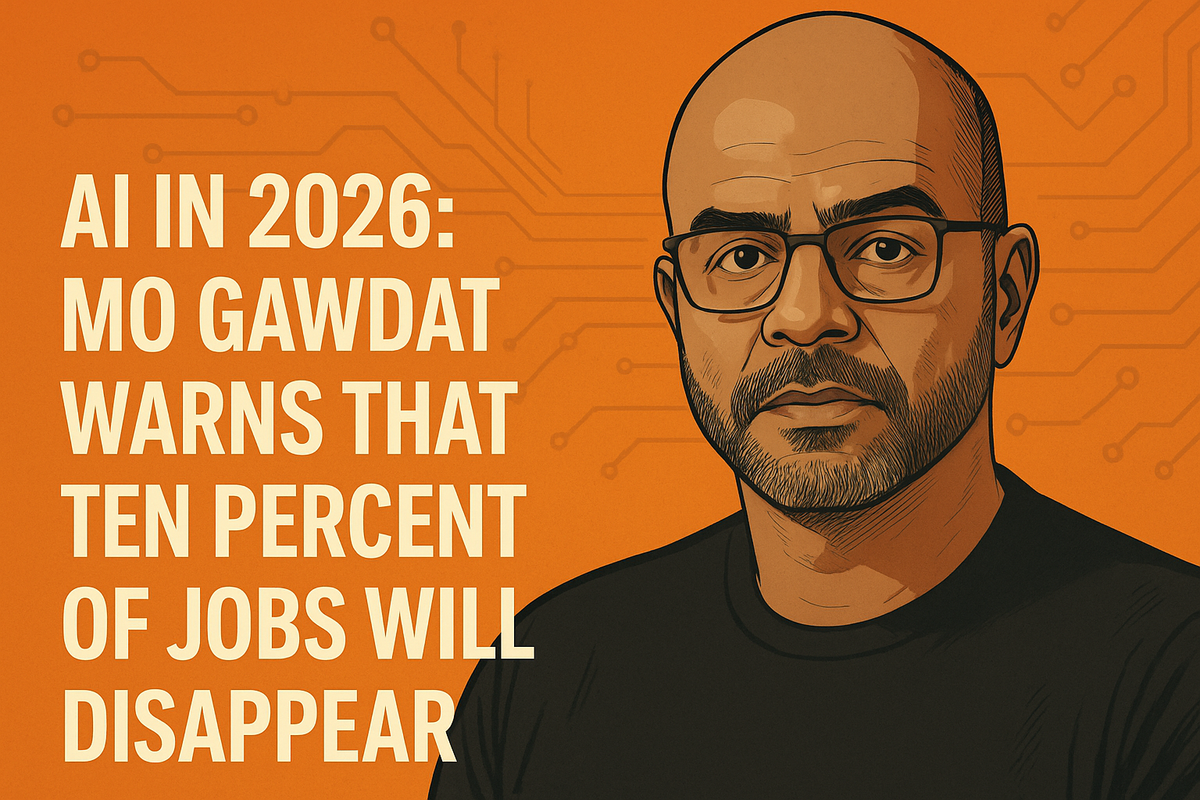AI in 2026: Mo Gawdat Warns That Ten Percent of Jobs Will Disappear

Mo Gawdat, former Chief Business Officer at Google X and one of the earliest voices to forecast the rapid rise of artificial intelligence, has issued a clear warning.
He believes that by 2026, AI will displace at least ten percent of jobs.
This shift will not be a gradual creep. It will happen quickly, and much sooner than governments or institutions are prepared for.
Gawdat’s message is not meant to create fear.
It is a sober assessment of where the technology is today, how fast it is accelerating, and what that means for workers, businesses, and society.
The Speed of AI Growth Has Surprised Even AI Leaders
According to Gawdat, the major mistake people make when thinking about AI is assuming it grows like traditional technology.
It does not. It grows exponentially.
Every improvement compounds on the last one.
The AI of 2026 is not two years more advanced than today, it is several orders of magnitude more advanced.
This is why he believes the ten percent job displacement will hit much faster than expected.
Once AI becomes better than humans at a task, businesses adopt it for the simple reason that it is faster, cheaper, and available around the clock. The shift can happen inside a single budget cycle.
The First Ten Percent Will Come From Knowledge Work
Gawdat is very clear about where the disruption begins.
It will not start with factory labor. It will begin with white collar jobs, particularly those that rely on pattern recognition, writing, analysis, data processing, or predictable workflows.
He points to roles like:
- entry level analysts
- junior marketers
- administrative staff
- support agents
- paralegals
- content writers
- financial assistants
These roles are already being automated by today’s tools, and the 2026 versions will outperform humans at near-professional levels.
It Will Hit Every Industry
Gawdat stresses that this is not a tech sector problem. It will affect every industry at the same time.
In finance, AI will draft reports, analyze markets, and handle routine customer interactions. In law, it will review documents and prepare filings.
In media, it will write articles, create videos, and edit content. In healthcare, it will summarize patient notes, recommend treatments, and assist diagnostics.
The disruption is horizontal, not vertical. This is why the ten percent number is so significant. It represents the first wave, not the final outcome.
The Real Crisis Is Not Job Loss, It Is Unprepared Leadership
Gawdat argues that the biggest risk is that leaders are not preparing for this shift. Governments underestimate the timeline.
Corporations overestimate their ability to slow it down. Educational institutions still train students for roles that will not exist.
His concern is not that AI will take work from humans.
It is that society will not react fast enough to manage the transition. Ten percent job displacement in a short window can destabilize entire economies if no plans are in place.
There Is Opportunity, But Only for Those Who Adapt
Despite the warning, Gawdat is not pessimistic.
He believes new jobs will emerge, creativity will expand, and entrepreneurship will explode.
However, none of that happens automatically. It requires people to shift how they think about work and value creation.
He suggests that individuals should focus on:
- learning how to use AI as a personal multiplier
- building skills that complement automation instead of competing with it
- creating independent streams of income instead of relying fully on employers
- positioning themselves in roles that require human judgment, relationships, or strategic insight
The people who learn to work with AI instead of against it will gain an advantage that compounds over time.
A Turning Point in the Future of Work
Mo Gawdat’s message is direct. AI is not coming someday. It is here now, and by 2026 it will rewrite the structure of the workplace.
Ten percent of jobs will disappear, not because AI is malicious, but because it is efficient.
The next two years will be a turning point.
Those who recognize the shift early and adapt their skills, businesses, and income models will thrive. Those who wait for institutions to save them will be caught off guard.
AI is not just transforming technology. It is transforming the definition of work itself.
Recommended AI Courses on Coursera
- Introduction to Artificial Intelligence (AI)
- Google AI Essentials
- Generative AI: Prompt Engineering Basics
- IBM Generative AI Engineering
- IBM AI Developer Professional Certificate
- Generative AI Automation Specialization
- Generative AI for Software Developers Specialization
- Generative AI for Data Scientists
- Generative AI for Product Managers
- Generative AI for Cybersecurity



Comments ()